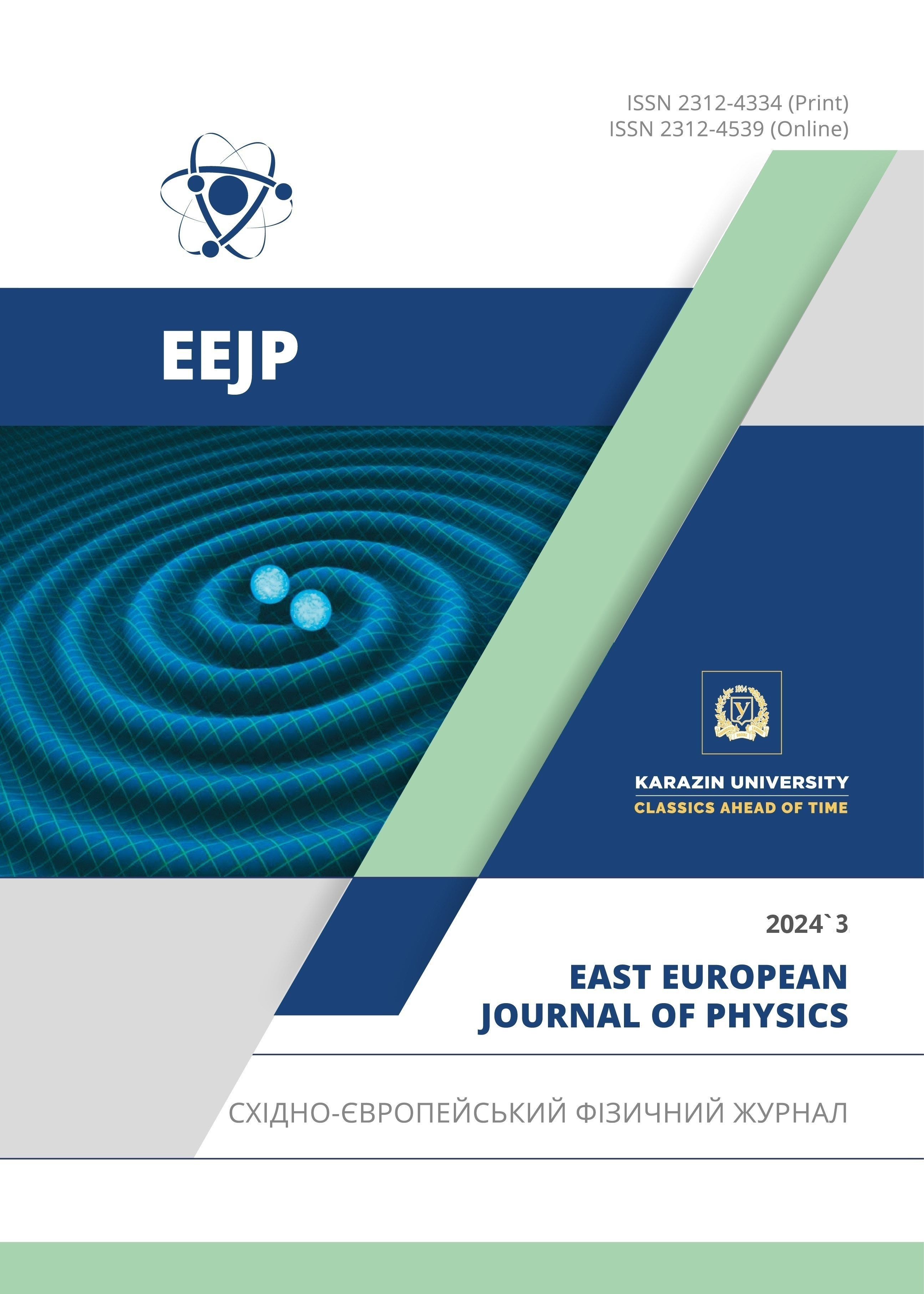On the Stability of Planetary Motions During Stellar Approaches
Abstract
The problem of the spatial motion of a passively gravitating body during an to the central body of a perturbing body – a test star – is considered. Using the exact expression of the force function, an integral invariant relationship – a quasi-integral – was found. Due to the quasi-integral, the regions of possible motion of the passively gravitating body, the surfaces of minimal energy (a generalization of the zero velocity surfaces), and the singular points of these surfaces were determined. The stability of planetary motion according to Hill during the approach of a test star to the Solar System was investigated. Criteria for the possibility, as well as the impossibility of capturing the passively gravitating body by the test star, were established. According to the Hill stability criteria, critical values of the orbital parameters of the test star were established, at which the planets of the Solar System either become satellites of the test star or leave the bounds of the Solar System.
Downloads
References
G.N. Duboshin, Celestial mechanics: Analytical and qualitative methods, 2nd edition, (Izdatel'stvo Nauka, Moscow, 1978). https://ui.adsabs.harvard.edu/abs/1978MoIzN....Q....D/abstract (in Russian)
L.G. Luk'yanov, “Analog of the surfaces of zero velosity in the restricted elliptic, parabolic, and hyberbolic three-body problem,” Astronomy Letters, 36, 823-833 (2010). https://doi.org/10.1134/S1063773710110083
L.G. Luk'yanov, and S.A. Gasanov, “Elliptical motions of stars in close binary systems,” Astronomy Reports, 55 (8), 733-741. (2011). https://doi.org/10.1134/S106377291108004X
A.G. Mamedov, “A twice-averaged parabolic restricted three-body problem,” Tr. Gos. Astr. Inst. im. Sternberga, 61, 79-86 (1989). https://ui.adsabs.harvard.edu/abs/1989TrSht..61...79M/abstract (in Russian)
A.G. Mamedov, “Secular perturbations of elements in the restricted parabolic three-body problem,” Astronomicheskii Zhurnal, 68, 1323-1327 (1991). https://ui.adsabs.harvard.edu/abs/1991AZh....68.1323M/abstract (in Russian)
A.G. Mammadli, “The limiting case of the double-averaged parabolic restricted three-body problem,” Solar System Research, 41(2), 171-173 (2007). https://doi.org/10.1134/S0038094607020104
A.A. Medvedeva, and S.A. Gasanov, “Elliptical motion of a star in a close binary system,” Astronomy Reports, 58(8), 554-562 (2014). https://doi.org/10.1134/S1063772914080046
G.W. Hill, “Researches on the Lunar theory,” Am. J. of Math. 1, 5-26 (1878). https://doi.org/10.2307/2369430
W. Scheibner, “Satzaus der storungstheorie,” Reine Angew. Math. 65, 291 (1866). https://doi.org/10.1515/crll.1866.65.291
K. Petr, and M.V. Nechvil, “Two remarks to a special case of three bodies problem,” Casopis Pestovani Mat. Fys. (Praha), 47, 268-273 (1918). https://iopscience.iop.org/article/10.3847/1538-4357/acc573/meta#fnref-apjacc573bib30
M.V. Nechvil, “Sur une nouvelle forme des equations differentielles du probleme restreint elliptique,” Compte. Rendue, 182, 310-314 (1926). https://iopscience.iop.org/article/10.3847/1538-4357/acc573/meta#fnref-apjacc573bib29
N. Rein, “Note sur l’article de M.V. Nechvil, “Sur une nouvelle forme des equations differentielles du probleme restreint elliptique,” Tr. Gos. Astron. Inst. im. P.K. Shternberga, 14, 85-87 (1940). https://ui.adsabs.harvard.edu/abs/1940TrSht..14...85R/abstract (in Russian)
K.V. Kholshevnikov, and Yu.F. Mishchuk, “The effect of stellar encounters on planetary orbits,” Vestn. Leningr. Univ. 2, 72 81 (1983). https://ui.adsabs.harvard.edu/abs/1983VeLen...2...72K/abstract (in Russian)
L.G. Luk'yanov, and V.S. Uralskaya, “Sundman stability of natural planet satellites,” Mon. Notic. Roy. Astron. Soc. (MNRAS), 421(3), 2316-2324 (2012). https://doi.org/10.1111/j.1365-2966.2012.20457.x
F. Szenkovits, and Z. Makó, “About the Hill stability of extrasolar planets in stellar binary Systems,” Celest. Mech. Dyn. Astron. 101, 273-287 (2008). https://doi.org/10.1007/s10569-008-9144-7
Copyright (c) 2024 A.G. Mammadli, R.T. Mammadov, U.S. Valiyev

This work is licensed under a Creative Commons Attribution 4.0 International License.
Authors who publish with this journal agree to the following terms:
- Authors retain copyright and grant the journal right of first publication with the work simultaneously licensed under a Creative Commons Attribution License that allows others to share the work with an acknowledgment of the work's authorship and initial publication in this journal.
- Authors are able to enter into separate, additional contractual arrangements for the non-exclusive distribution of the journal's published version of the work (e.g., post it to an institutional repository or publish it in a book), with an acknowledgment of its initial publication in this journal.
- Authors are permitted and encouraged to post their work online (e.g., in institutional repositories or on their website) prior to and during the submission process, as it can lead to productive exchanges, as well as earlier and greater citation of published work (See The Effect of Open Access).








